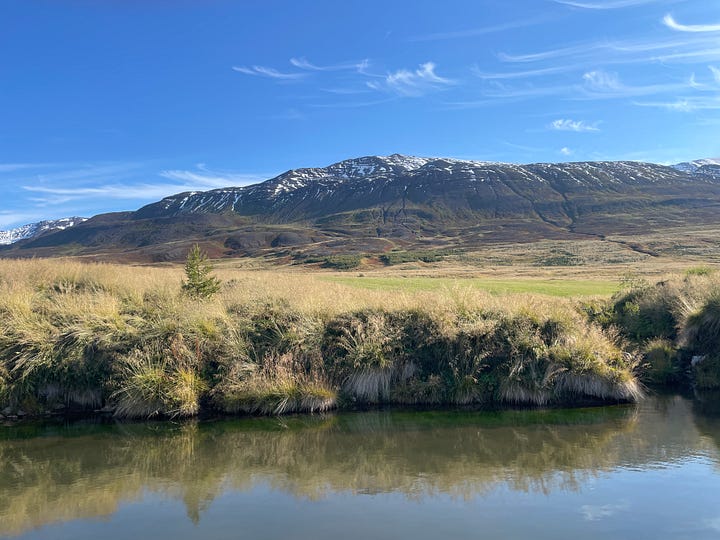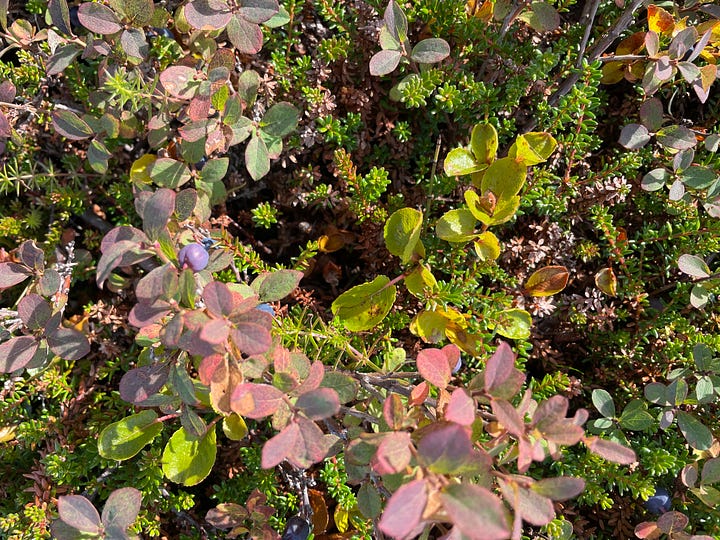A trip to Grímsey, Preserving Vegetables, and Smoking Trout and Goose
Vellir farm, Dalvík, Iceland
Grímsey
This week I got to spend a couple of days with some of my oldest friends, who were on vacation in Iceland. On their trip, they stopped by Vellir, recharged their bodies with Bjarni’s lamb & vegetables stew, and got to enjoy some impressive northern lights displays. We spent my day off together, going on a trip to Grímsey Island, the most northern part of Iceland.
We took the ferry from Dalvík in the early-ish morning. As is so often the case, it’s more about the journey than the destination. We were on the ferry for more than 6 hours that day, and we spent about three hours on Grímsey. The boat ride proved to be more difficult on the stomach than originally anticipated, but nonetheless, I would do it again.
When we arrived at Grímsey, we immediately retreated to the one and only open establishment on the island, in desperate need of tea and solid ground. As the main tourist season is ending, there are considerably more sheep than people on the island. The shop, café, and place where you can get the certificate for crossing the Arctic Circle is run by a charismatic lady, who won’t let you buy the wool pullover without trying it on first. Her standard phrase is: “Help yourself to the tea and coffee and pay me later!”
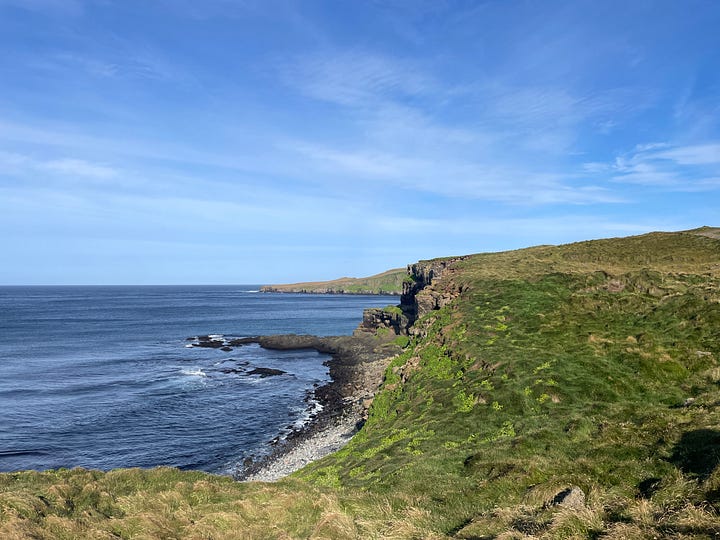
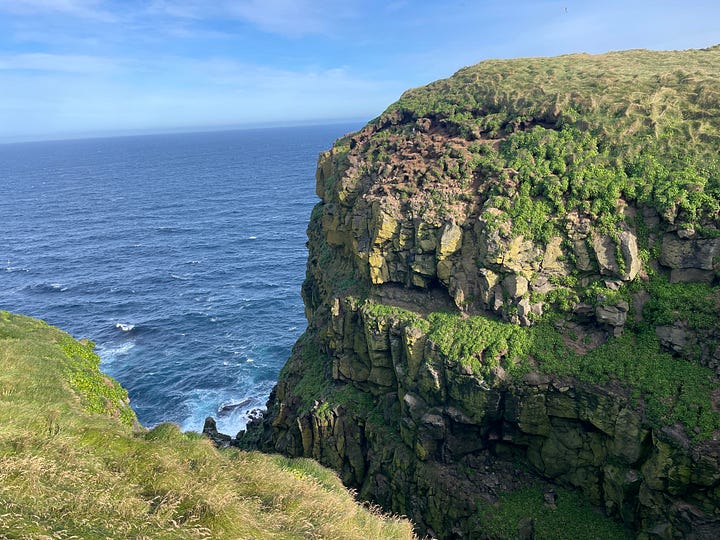
After recovering from the boat trip, the three of us headed towards the northern part of Grímsey, since there’s a monument marking the location where the Arctic Circle crosses the island. Walking along the coastline, spotting a dead seal on the shore, feeling the temperature of the water, and seeking shelter from the wind.
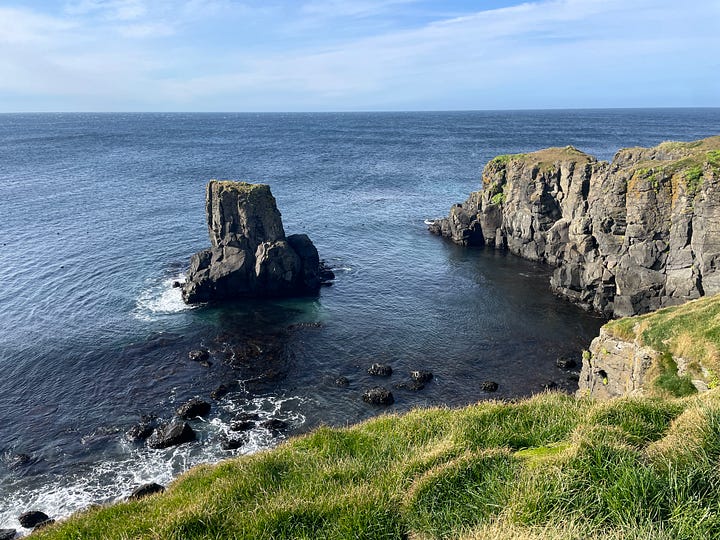
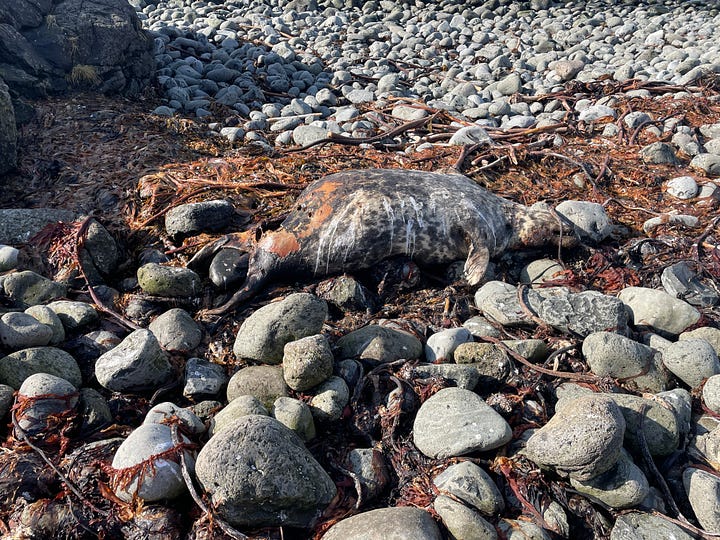
The views at the most northern point of Grímsey are truly breathtaking. Birds playing in the wind, waves crashing against the shore, smell of salty water in the air, sheep grazing freely, and spotting Iceland’s snowy mountains in the distance. On our way back towards the harbor, we stopped at the school playground and put the jumping pillow to the test. The boat ride back was (thankfully) more pleasant. A fun day.
Smoking trout and goose
I’ve been eyeing the smokehouse at Vellir since I arrived. Smoked cheese, goose, lamb, and trout are sold at the farm shop. Bjarni is adamant about fish and meat being properly salted and dried before they are smoked. We prepared the trout for smoking by salting it generously. The next day, we scraped the skin of the trout with a knife to remove what looked similar to Shrek’s snot and dried the fillet well on both sides. Then, we placed a string through the fillets and hung them in the smoker (importantly, so that they do not touch). We cold-smoked them for two to three days, some with dried sheep dung, and others with beech wood chips.
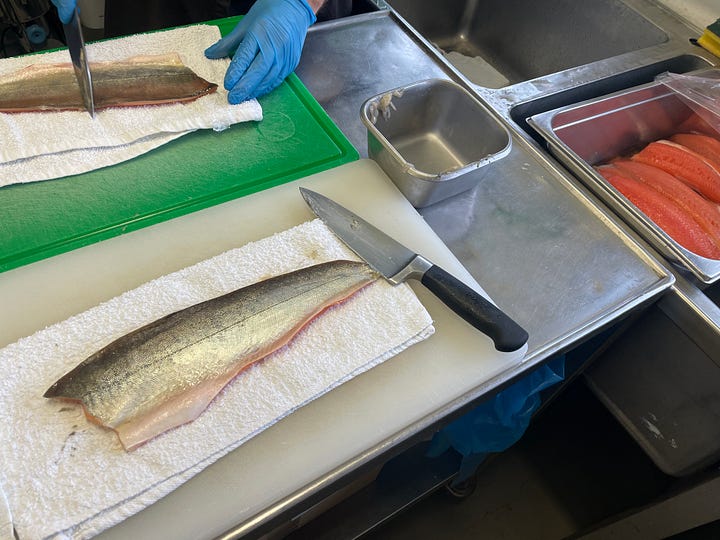
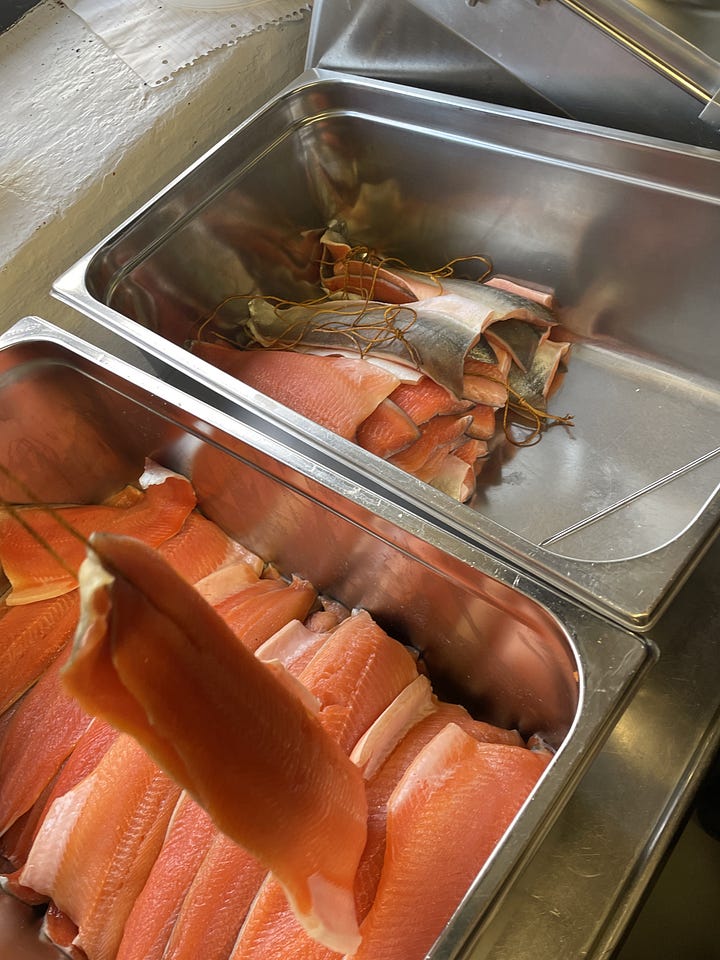
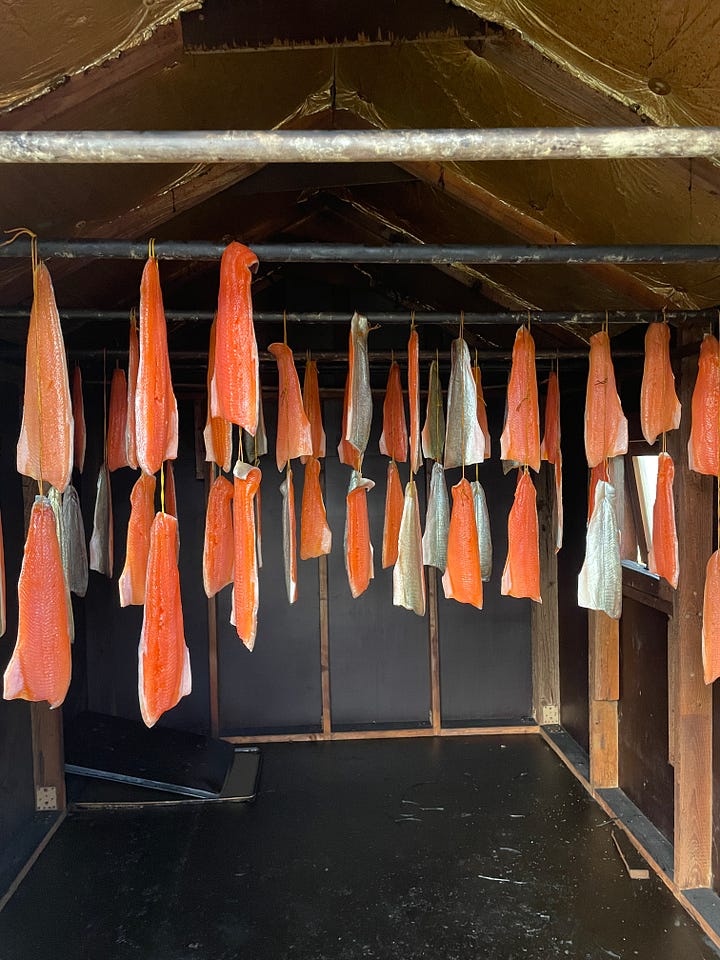
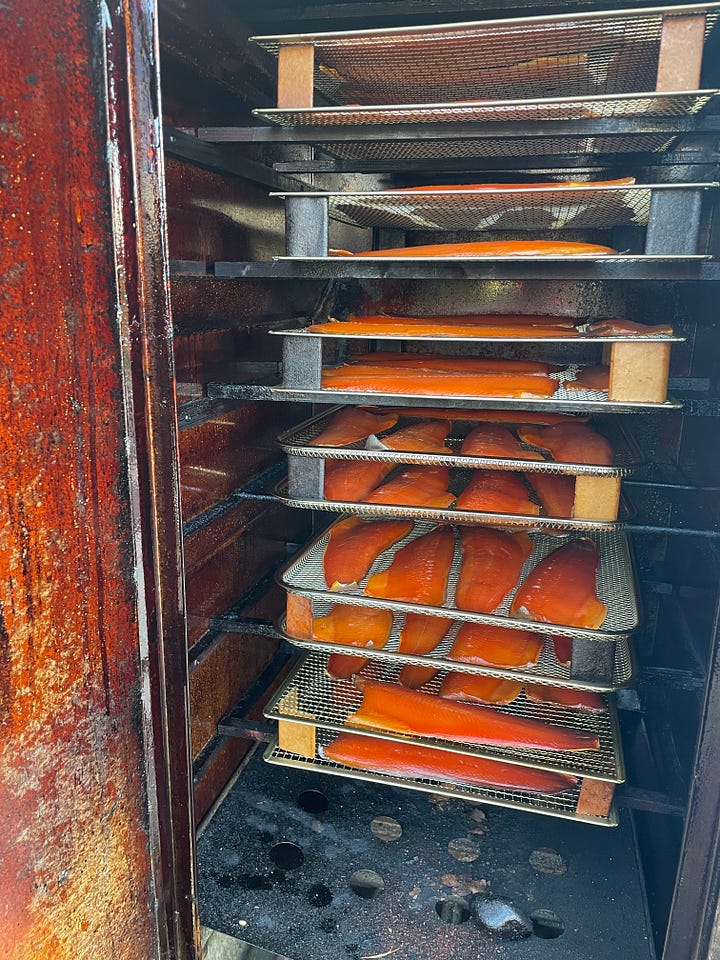
We brined goose breasts in water, salt and sugar for a day. After that, they were patted dry and any visible connecting tissue was removed. We cold-smoked them with beech wood chips for about two days. When the goose breasts were smoked to our liking, we vacuum packed and cooked them sous vide at 69 degrees Celsius for 69 minutes.
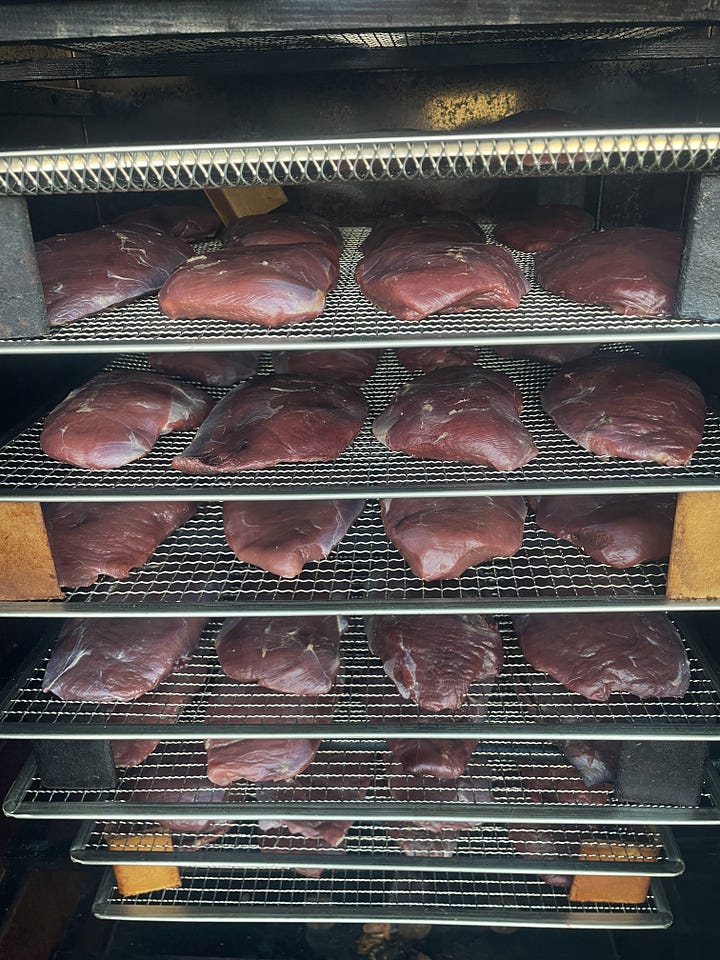
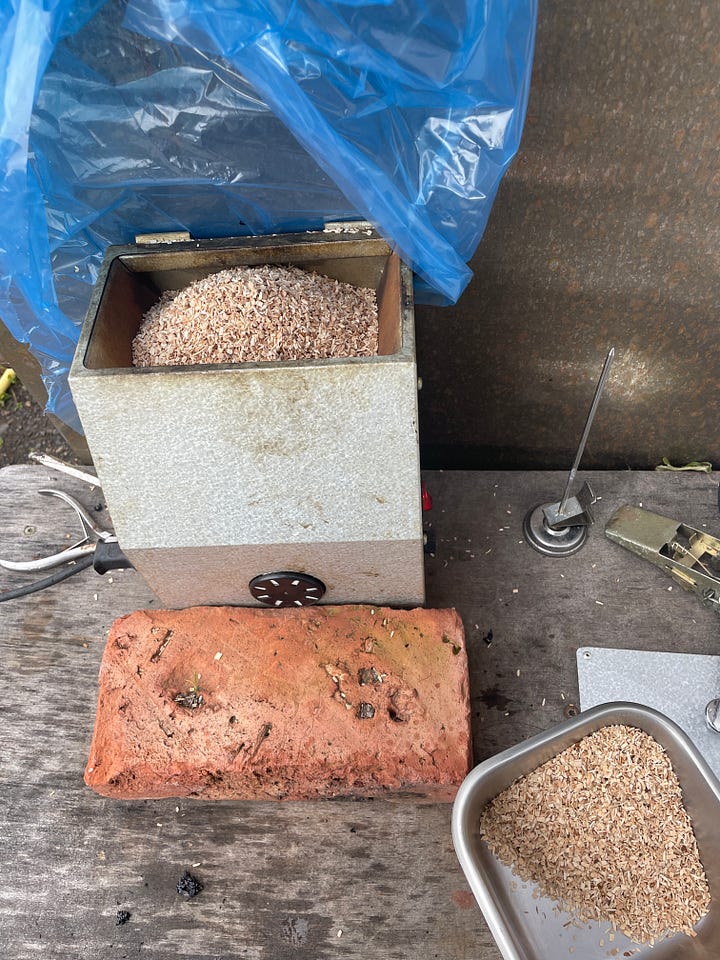
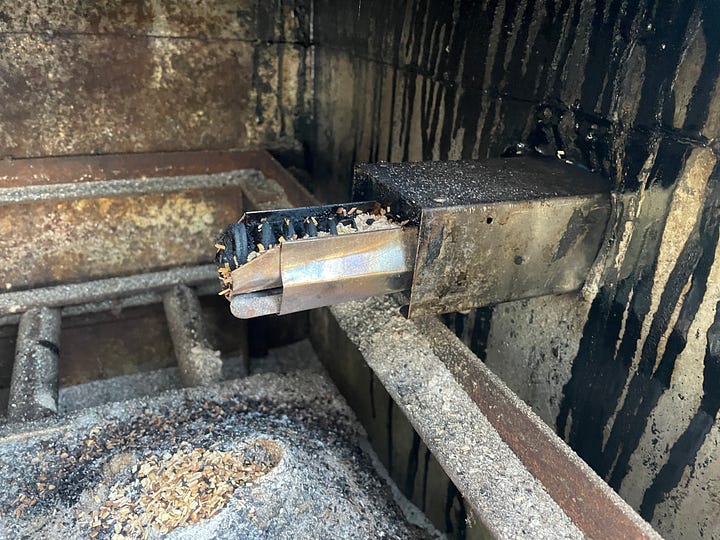
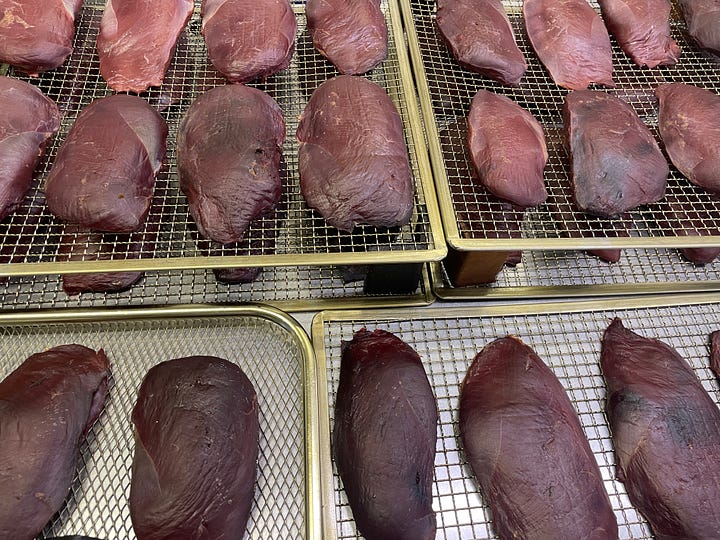
Pickling, fermenting, blanching
We’ve dedicated some days to preserving vegetables in different ways. We’ve been drying some herbs, pickling beetroot and cucumbers, fermenting and pickling a mix of vegetables, such as carrots, cauliflower, celery, zucchini, cucumbers, and onions. I learned about the necessity of having a sink right by the stove when my task was to blanch beetroot and cabbage leaves. Ending up with colorful jars and vacuum-sealed bags full of goodies for a later day. I enjoy doing this.
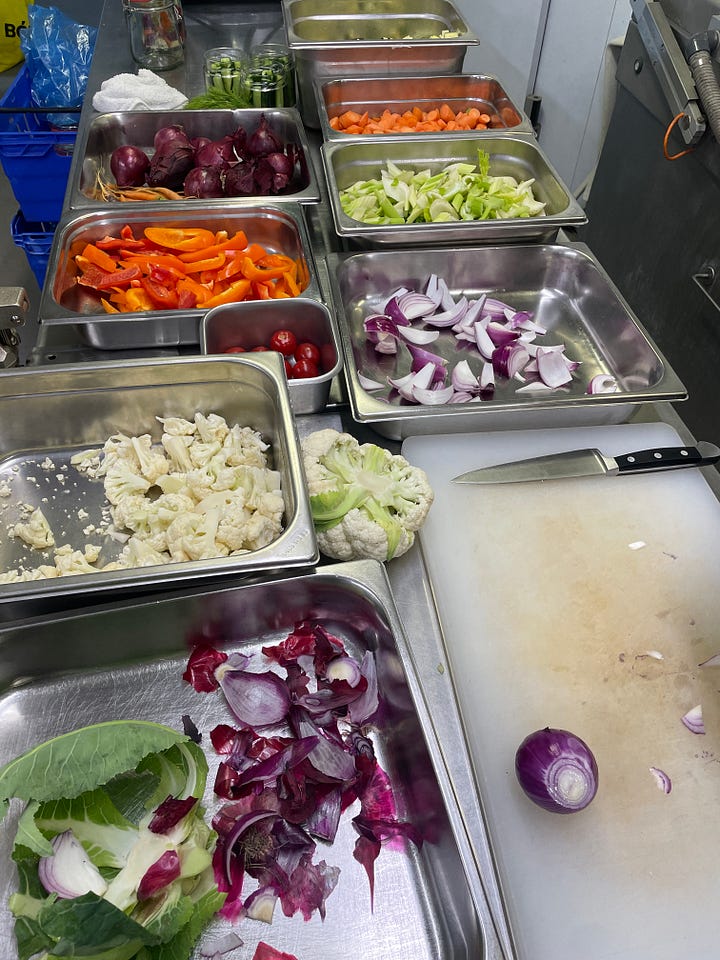
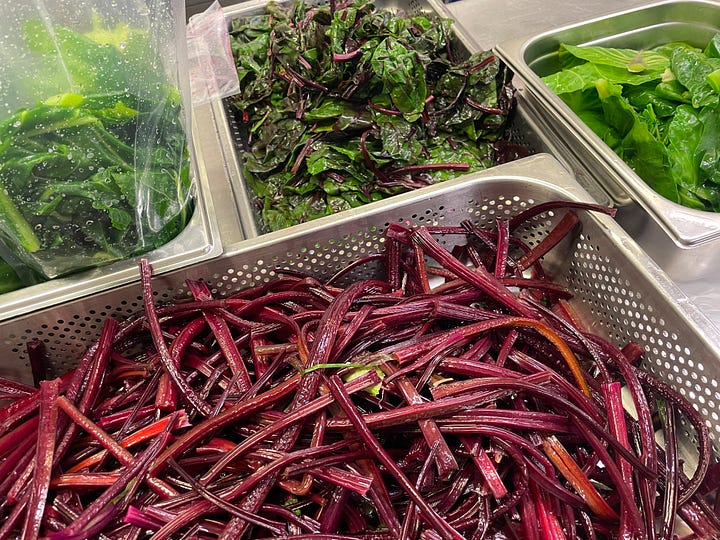
We made a simple brine for pickling by boiling 3 liters of vinegar with 1 liter of water, adding 300 grams of sugar, and 4 tablespoons of salt. We filled the jars first with some peppercorns, a bay leaf, and seeds of choice (mustard seeds and coriander seeds, for example). For fermentation, we used 30 grams of salt for every liter of water. Ideally, one would boil the water with salt and cool it down before topping the jars full of vegetables destined to be fermented.
Crunchier vegetables are usually more suitable for fermenting. Importantly, bail-top jars are needed for fermentations (they allow gases and water to escape, whilst preventing oxygen from entering), and the vegetables have to stay under the salt solution. What I tried and tested is leaving the jars at room temperature for 7 to 10 days, and then placing them in a basement (or a fridge) where the temperature is lower for at least another 3 weeks. After about a month, the fermented vegetables are ready to eat. It’s quite easy to tell if the fermentation went in the right direction: the smell (should be pleasant) and the absence of mold are key points to look out for.
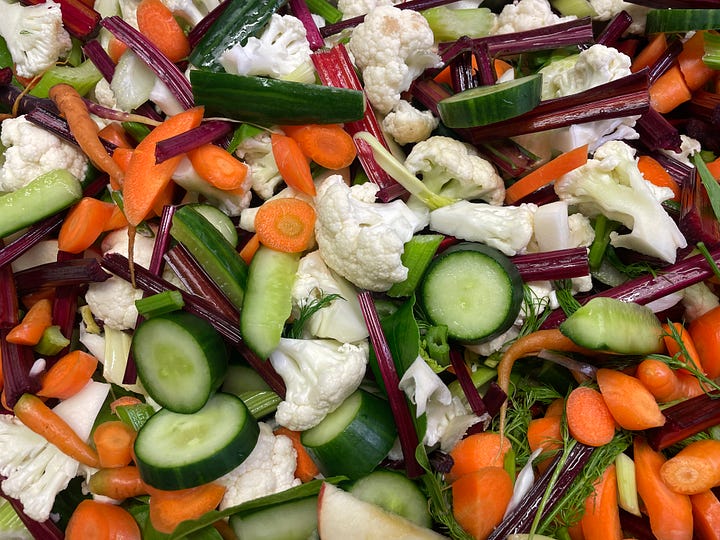
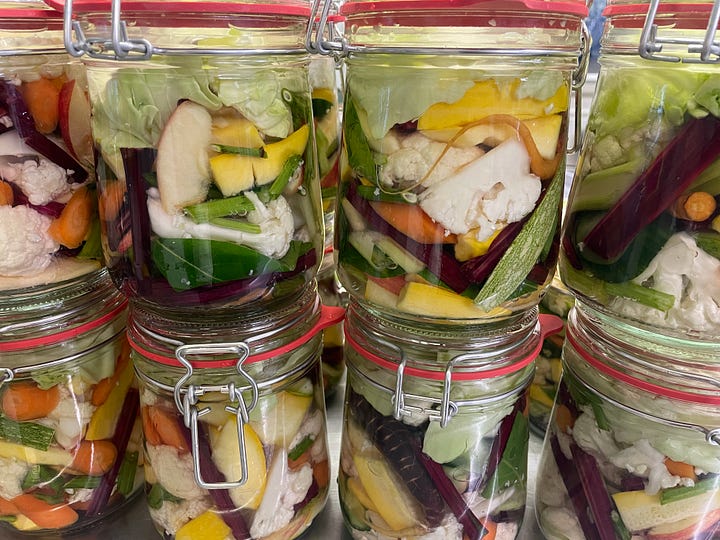
Colors around Vellir
There is a forest facing Vellir and another small one just a short walk from the farm. We feel lucky to be surrounded by some trees, considering the forest coverage of Iceland. The berries are changing color, giving a purple and red tint to the mountains. It feels like autumn and the walks seem even more scenic.
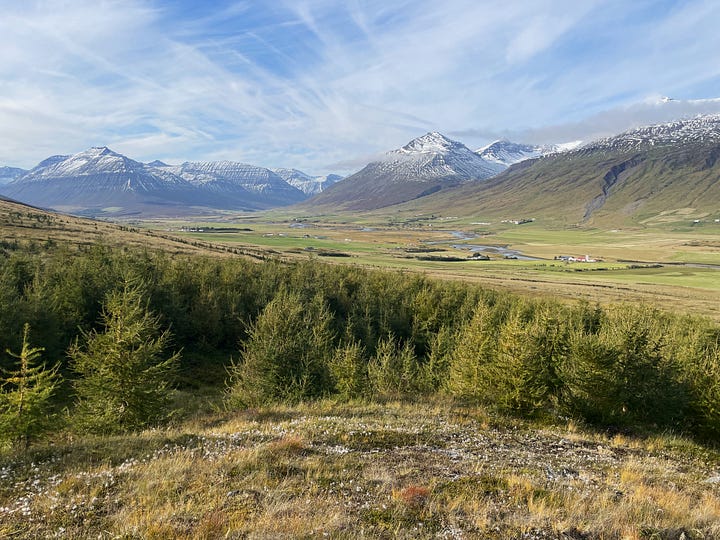
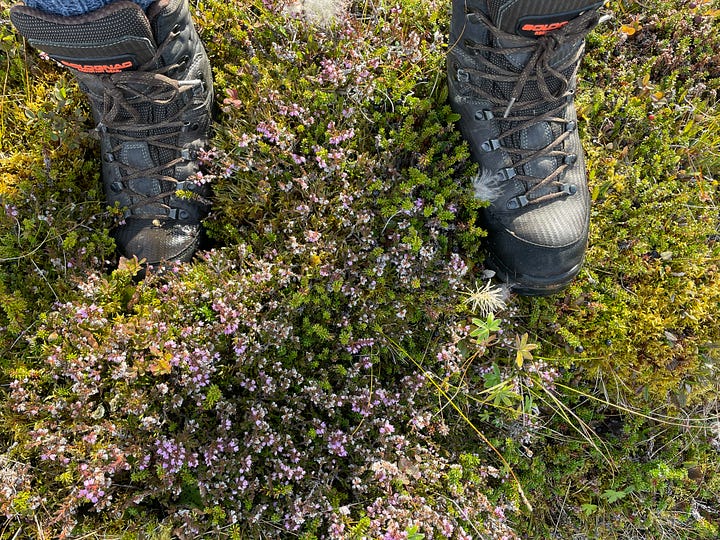
Recently, all of us volunteers went on a walk together after work. Some were in inappropriate shoes for jumping over streams which is inevitable once you leave the road. All with smiles on our faces, enjoying the company, views, and the evening light. Distinguishing between blue-colored berries remains an interesting topic of conversation. It seems that the crowberries are the most resistant against frost among the three berries, as there are still plenty of nice-looking ones around.
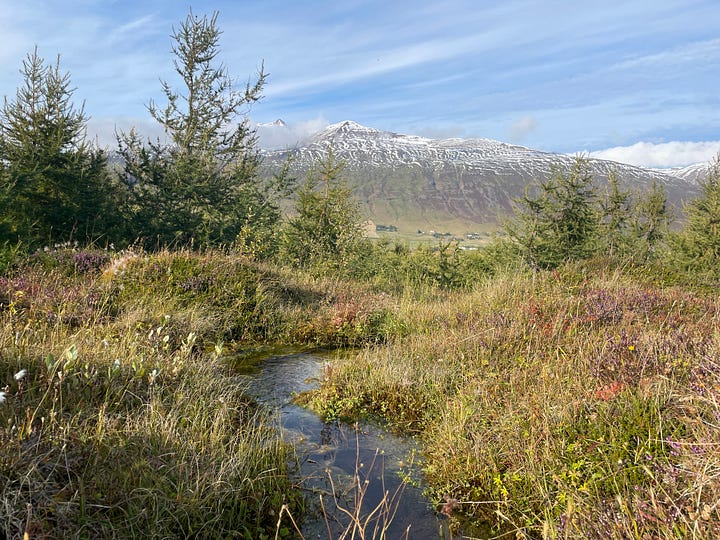
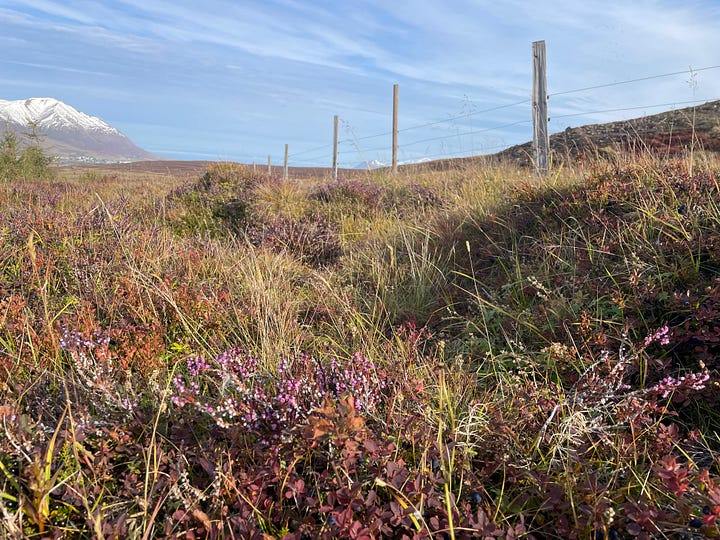
I became closer to the people at Vellir. Svarfaðardalur now seems more familiar. It’s still too soon to think about goodbyes but they are already on my mind. We have an interesting week ahead of us, with hiking and culinary adventures planned.
